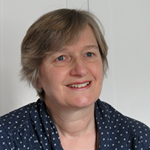July 2018 issue out now ...
An aunt of mine was often heard to remark sagely ‘When one door closes, another one shuts’. She wasn’t a particularly pessimistic person; she was just misquoting inventor Alexander Graham Bell. What he actually said, of course, was ‘When one door closes, another opens’, and this is often taken as an indication of his optimism that people can learn from their mistakes and move on to new opportunities. In fact, however, the quote doesn’t end there – there is a sting in the tail: ‘but we so often look so long and so regretfully upon the closed door, that we do not see the ones which open for us.’
As teachers, our hope is, naturally, that our students will move on successfully from our classes, and it is our job to help them to attain their goals, so that life’s doors open for them. But how do we do this, and how do we determine how much progress they are making?
In our main feature, Scott Thornbury discusses how progress was assessed in the past, and how it is done now. He worries that we put too much emphasis on artificially-created scales of achievement and methods of assessment that rely on instinct, rather than actual research into learning.
Pete Sharma and Barney Barrett recognise the doors that have been opened by technological advances. They see the blended learning model as a way of transforming teaching, offering many new opportunities – and they are keen to help teachers introduce it successfully.
Some students hope to progress beyond general English and use their language skills to study in an English-medium university. The gatekeeper exam that will enable them to take this step is IELTS. But for Mark Heffernan, just getting the students though the exam is not really enough. There is a big gap between the skills required to pass the exam and those that the students will actually need at university. He describes how teachers can help to bridge that gap and prepare their students better for what lies ahead.
Clare Maas knows that progress into academic study also requires comprehension of some difficult concepts. She makes a point of teaching her students the difference between stance, opinion and fact, something which many of them find confusing.
Students intending to move on to further study in English will need a battery of additional skills. As Chia Suan Chong reminds us, one of these is the ability to take comprehensive and comprehensible notes, and this is another thing we can help our students with.
Away from university study, Mustafa Altan is also looking to his students’ futures. He believes that entrepreneurial skills will be vital for them and for the societies in which they live. He sees the English language classroom as an ideal place for these skills to be engendered, so that more opportunities will open up for the students when they go out into the world.
Whatever doors our students are hoping will open for them, whether their aim is simply to improve their English or they have their sights set on study at an English-medium university or a career in international business, they need us to help them progress as far as the door, sometimes to nudge them through it, and always to ensure that they have the skills to cope on the other side.


Comments
Write a Comment
Comment Submitted